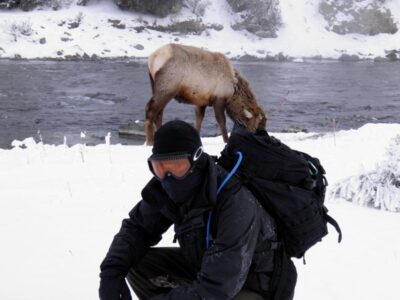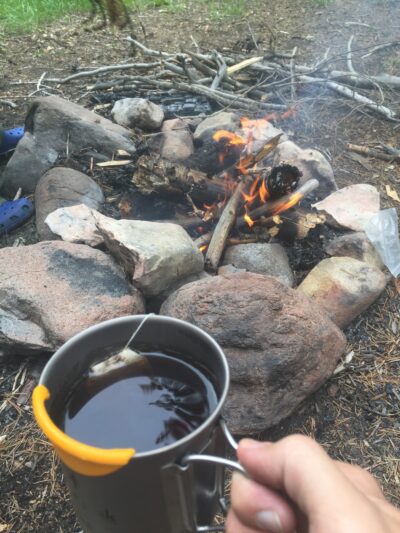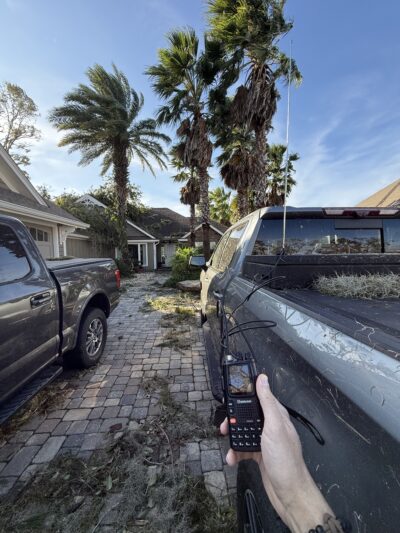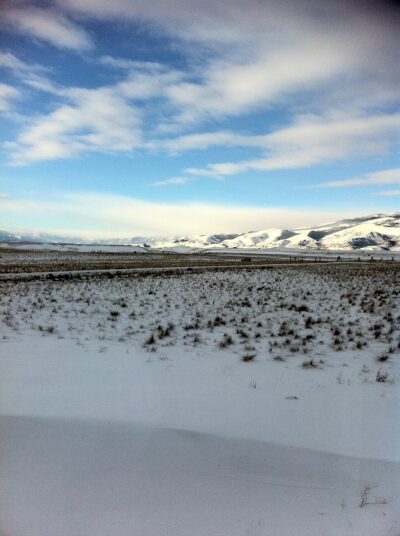OutdoorHub
Winter Survival Gear: Must-Have Essentials for Extreme Cold
As I write this, 70% of the country is experiencing freezing temperatures, with some areas reaching lows of 25 below zero. Another polar vortex is forecasted for late January into early February. For some, this is just another winter season, but vital services can break down when extreme cold hits areas unprepared for sustained freezing temperatures. Just last year, Texas endured record-low conditions that caused widespread power outages, leaving thousands vulnerable.
We don’t always get to choose the moment; many times, the moment chooses us. Then again, many skiers, campers, and hunters purposefully venture out into the backcountry expecting these conditions. Even the most prepared individuals know that weather can shift rapidly and contingencies can fail. Hoping for the best is not a survival strategy. Instead, having the right gear and knowledge dramatically increases your chances of sustaining yourself, your family, or your team through harsh winter nights.
Essential Winter Survival Gear
FIRST LINE: SURVIVAL GEAR
Clothing
When it comes to winter survival gear, layering is key—both figuratively and literally. Just as a soldier organizes their kit into first-line, second-line, and third-line gear, we can think of winter survival gear in similar categories. The first priority is clothing, footwear, and gear we carry on our person. You can’t survive long in extreme cold if your body can’t retain heat, so understanding the basics of layering is vital.
The base layer is meant for moisture wicking and temperature regulation. In freezing temperatures, the last thing your body needs is sweat, which can lead to hypothermia. Despite innovations in synthetic fabrics, wool, especially merino wool, is a trusted material for experienced winter backpackers.
Next, your mid-layer purpose is to trap heat. Light jackets or quarter-zips made of insulated materials, especially those with waffle patterns (small square-shaped pockets), are excellent at retaining pockets of warm air. Down feathers are another effective option for insulation, working well as either a mid-layer or outer layer, depending on conditions.
Finally, your outer layer is your primary defense against snow, rain, and wind. A waterproof shell jacket and pants are essential here, with Gore-Tex reigning supreme. The thickness or weight of the Gore-Tex will depend on your expected conditions, but this layer ensures protection from frostbite and hypothermia when paired with your other layers.
Now that your body is nice and toasty let’s cover those extremities…
A good boot and pair of socks can make or break any outdoor adventure. If the feet are cold, it doesn’t matter how warm the rest of the body is. Procuring a good Gore-Tex boot and thermal socks goes a long way in the wilderness. The height of the boot is dedicated to the activity, but ankle-height boots are a good all-purpose shoe.

Lastly, some accessories to add are a good pair of gloves and mittens to layer on top of each other. Think of the mittens as a shell jacket for your hands, something waterproof and windproof. To top things off, packing a beanie, neck gaiter, and balaclava allows you to add layers to your head and face. Protecting these extremities is essential as this is where heat escapes the most. Clothing brands have many options that consider all ranges of budgets, but winter outdoor clothing is not something you want to skimp on. Your future self will thank you when the weather turns for the worst.
Kit Essentials
In addition to first-line gear like clothing, you’ll need survival items that can live on your person and in your pack to help you endure the elements. Many of these items overlap with first-line and second-line gear. Having these redundancies ensures that you have a backup plan when the worst conditions arise.
This mindset became real when I was hiking Bighorn Pass. My group relied on a carefully planned set of contingencies for gear failure and shifting weather. We never thought we’d be down to our last method of heating food and keeping water from freezing. Adherence to the PACE principle increased our chances of survival when planning our gear: primary, alternate, contingent, and emergency. Applying this framework kept us honest and built redundancies for what we truly needed to stay warm, healthy, and nourished.
Staying Warm
As we have already discussed, clothing is the primary means of keeping warm. Alternate portable options, such as hand warmers or other heating agents, are supplemental items that reinforce warmth by being stowed in pockets or your sleeping bag.
Fire is another critical tool for providing warmth, but it’s unreliable in extreme conditions. Magnesium fire starters and windproof lighters are excellent backup options, while weatherproof matches make for a simple emergency solution. Just remember: fire isn’t just about warmth—it’s also your lifeline for food and water. On my trip to Big Horn Pass, my group’s primary and alternative fuel sources failed us while staring down an unexpected blizzard. So, while fire is a piece of your PACE plan for staying warm, it should not be your only option for making food and melting water.

Staying Nourished
First-line food should be simple, ready-to-eat items like protein bars, granola, or freeze-dried snacks. These are good for an on-the-go boast or sustenance in an emergency. I’ll never forget the night at Bighorn Pass when a blizzard rolled in, and we were down to our vacuum-sealed rations. It was not a 5-start cuisine by most standards, but to us, it was a gourmet meal given the circumstances.
Medical Gear
Medical gear is more than a first aid kit or a stop-the-bleed bag. For harsh winter conditions, you’ll require supplies to prevent frostbite and hypothermia. Cold packs, thermal wraps, and a pair of extra dry base layers can mean the difference between freezing to death or making it home in one piece. But medical gear isn’t just about treating injuries; it’s also about being rescued.
Survival tools such as signal mirrors, whistles, and flares are necessary supplements to one’s medical gear. Sometimes, the best “medical kit” is the one that gets you rescued. For this, I’d recommend something akin to a Garmin inReach. Satellite communication devices are invaluable for this purpose. While newer iPhones now include satellite texting, they’re less reliable in weak signal areas or during disasters when cell towers are overcrowded. For example, this was the case for me in the aftermath of Hurricane Helene. Our phones still had some bars left from the cell towers however nothing was getting through for days. So, in disasters like our most recent winter storm, having alternative methods of communication goes a long way.
Comms
An FRS/GMRS or UHF/VHF handheld radio adds layers to one’s PACE plan and is easily stowed on your person. Acquiring a serious satellite phone is more versatile than sending a text message or personal locator beacon. Hearing another individual’s voice sometimes keeps one going when conditions seem hopeless.

Clean Water
If rescue is days away, clean water becomes your top priority. Always carry water on your person, not just in your pack. Keeping it close to your body helps prevent it from freezing. A CamelBak or canteen is no good if the water inside has turned to ice.
If snow is on the ground, you can resupply your canteen, but be sure to keep it warm and clean. Keeping some NaDCC water purification tablets in your pocket ensures that whatever water source you encounter can be made drinkable. CANA Provisions carries good water decon kits that fit in your pockets or a pack. Remember, your body sheds water quickly in cold environments—even if you’re not actively sweating. Staying hydrated is as critical as staying warm.
Building redundancies into your winter survival gear from the first to the second line is ultimately the key to success.

Second Line: Tools of the Trade
BAGS AND ESSENTIAL KIT:
Moving on to our second line, what we can carry in a bag or even a vehicle. This gear serves as your primary go-to for staying warm, healthy, and nourished while away from your third-line gear (e.g., base camp, home, or a temporary shelter). What pack to buy is dependent on how long one plans to be away from home base.
A good starting point is a 3-day sustainment pack, which is ideal for most short-term survival scenarios. Brands like Eberlestock or the bags from a company formerly known as Mystery Ranch offer great options.
When assembling your second-line kit, thinking in layers is a key theme again. Multipurpose gear such as a leatherman or an entrenching tool serve varied roles for making shelter, starting a fire, or processing game. While most multi-tools include folding blades, carrying a fixed-blade knife adds an extra layer of versatility and durability.
The entrenching tool can help clear snow, dig fire pits, or build shelters. But if you’re venturing into terrain that demands it, specialized tools like snowshoes, ice axes, and crampons can also be added—but only if the conditions call for them.

In the winter months, daylight is not your friend. The shorter days and long nights make lighting tools essential. While fire provides some light, it cannot be our sole source for illuminating those dark, cold nights.
Headlamps are a good first-line piece of kit because they keep your hands free while navigating in the dark. But having multiple handhelds or lanterns packed away guarantees the night won’t have the last word. Be mindful that the cold is ruthless in terms of battery consumption, so having battery banks or spare disposable batteries is a good idea. I recommend diversifying your power sources as part of your PACE plan. For instance, use a USB-C powered headlamp, a high-powered handheld running on CR123s, and a solar lantern to ensure redundancy for your lighting kit.
As you travel and mark the snowy terrain, you will need solid navigational tools to illuminate your way back home.
Always carry a waterproof map of the area and a compass as part of your first-line gear for navigation. However, your primary navigation tool should be a dedicated GPS device with offline capability. Smartphones equipped with GPS apps can supplement our kit but shouldn’t be our only source of finding our way.
It is important to reinforce everything we covered in the first line, such as food, clean water, and a spare base layer of clothing in your pack. Attaching a tarp, sleeping bag, or compact tent to the outside of your pack enables you to quickly establish a basecamp to host your third-line gear.
Third Line: Sustainment Gear
Shelter and Sleeping Equipment
If you plan to stay home this winter, stock up on essentials like a generator, firewood, and gas/propane to ensure a cozy winter rather than a harsh one. For those venturing into the wilderness, however, building a home away from home in the backcountry requires the proper shelter and sleeping gear.
A sub-zero-rated sleeping bag is vital when you are ready to bed down. While it’s tempting to layer up inside your sleeping bag, doing so excessively can cause sweating, which increases the risk of hypothermia. Instead, use insulated sleeping pads that keep your body off the ground and aid in retaining heat.
Using a tent or tarp from your second-line gear for shelter will shield you from inclement weather. Double-walled, 4-season-rated tents are the best option for those multi-day trips with long freezing nights.
Practicing with this gear at home is vital for testing what works and what doesn’t. Assembling a tent for the first time in a blizzard is not a recipe for success. Testing your gear at home ensures it works and builds confidence and resilience for when you face harsh conditions.

PARTING THOUGHTS
Hiking Big Horn Pass in subzero conditions gifted me with hard-earned lessons I’d never forget. For example, at 6,000 feet (1.83 km), the air pressure is lower, meaning less oxygen is available in a given air volume. This is a problem if one of your primary sources of fire is a propane camp stove. Even when it’s tested, gear does not always cooperate with the plan you had in mind. You can plan an alternative fuel source, such as diesel fuel with -20° additive in it, yet that fails when solidifying under unexpected extreme weather. Remember that layering in multiple preparation areas is key to testing and surviving the harsh cold. Testing your PACE plan empowers you to walk confidently into the deep unknown waiting for you on your next adventure. Nature is still wild and free; it pays no mind to your intentions.
It is a steady mindset paired with quality gear that ensures you make it out on the other end of those cold, dark winter nights.
The post Winter Survival Gear: Must-Have Essentials for Extreme Cold appeared first on OutdoorHub.


